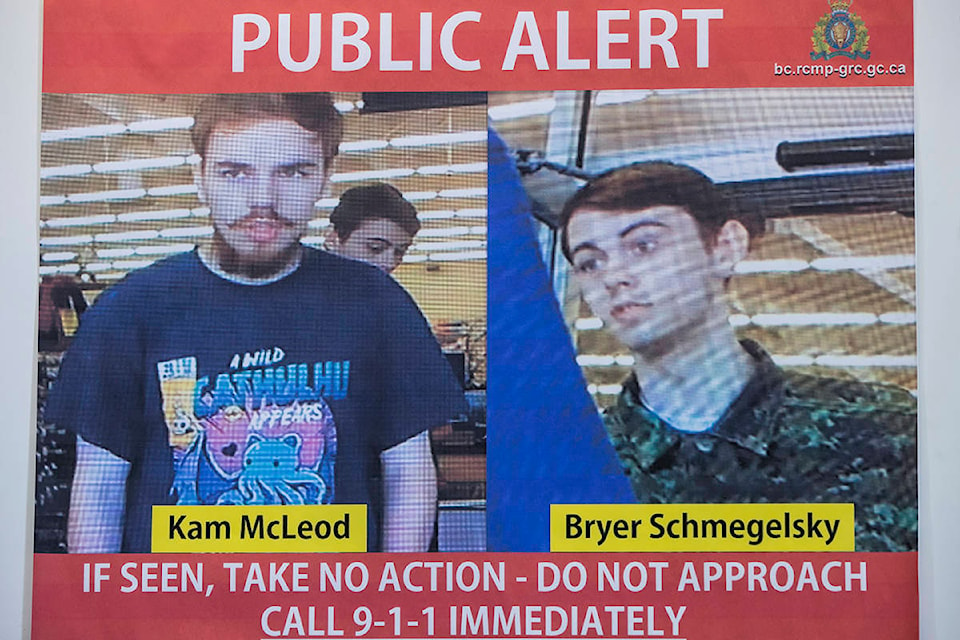The ongoing saga of two young fugitives from Port Alberni has brought up some important questions for journalists.
As of Monday afternoon, Kam McLeod, 19, and Bryer Schmegelsky, 18, remained at large while a manhunt continued in northern Manitoba.
Initial reports described a pair of teens missing amid a series of deaths in northern B.C., sparking concerns about their well-being.
But later, when they were spotted in surveillance footage in a store in Saskatchewan, police said they were suspects in the deaths of two tourists, 23-year-old Lucas Fowler and and 24-year-old Chynna Deese.
The two young men were then charged in the death of Vancouver botany lecturer Leonard Dyck, 64, whose body was found near Dease Lake, B.C.
That headline though. Come on. Ask yourself: what if these murderers were not white. https://t.co/5WeQEEUhcb
— David A. Robertson (@DaveAlexRoberts) July 25, 2019
Some critics said the pair were being portrayed less critically than if they had been Indigenous. Would non-Caucasian suspects be described as “teens”?
The implication here is that calling someone a teen makes them appear less responsible for their actions than someone described as an adult.
Andrew Kurjata, a CBC journalist based in Prince George, addressed some of these issues in a thread on Twitter. He noted that he initially called the pair teens when reporting on them as missing persons.
In the hours after they were named as suspects, he said, he kept using that term, an apparently-unconscious decision to keep the language consistent with his previous reporting.
“I also have no idea what language I would have used had an 18 and 19-year-old been reported as suspects from the start,” he said. “But I can tell you it’s something I will think about now, if we have the misfortune to report on such an event again.” The huge amount of attention given to the case – including extensive analysis on where the two might have gone bad – was also described by critics as a double standard.
One anonymously-penned meme circulating online, including on the Facebook page Treaty Six Grassroots Movement, asked: “How often do you see the parents of Indigenous murder suspects being interviewed in Canadian media to defend their child’s character? When it’s white people we have to understand ‘why,’ ‘what made him snap’ and ‘did he have mental health problems?’”
The post suggests that some people are already considered criminals because of the colour of their skin.
This is a critique those of use who work in the media should take very seriously if we wish to stop perpetuating harmful stereotypes: how might our everyday methods of reporting reflect centuries of dehumanization?
Still, when it comes to the deep analysis into the life stories of the suspects, I think this can be partially attributed to how gripping, strange and tragic this saga has been.
@davidgordonkoch
david.koch@campbellrivermirror.com
Like us on Facebook and follow us on Twitter
